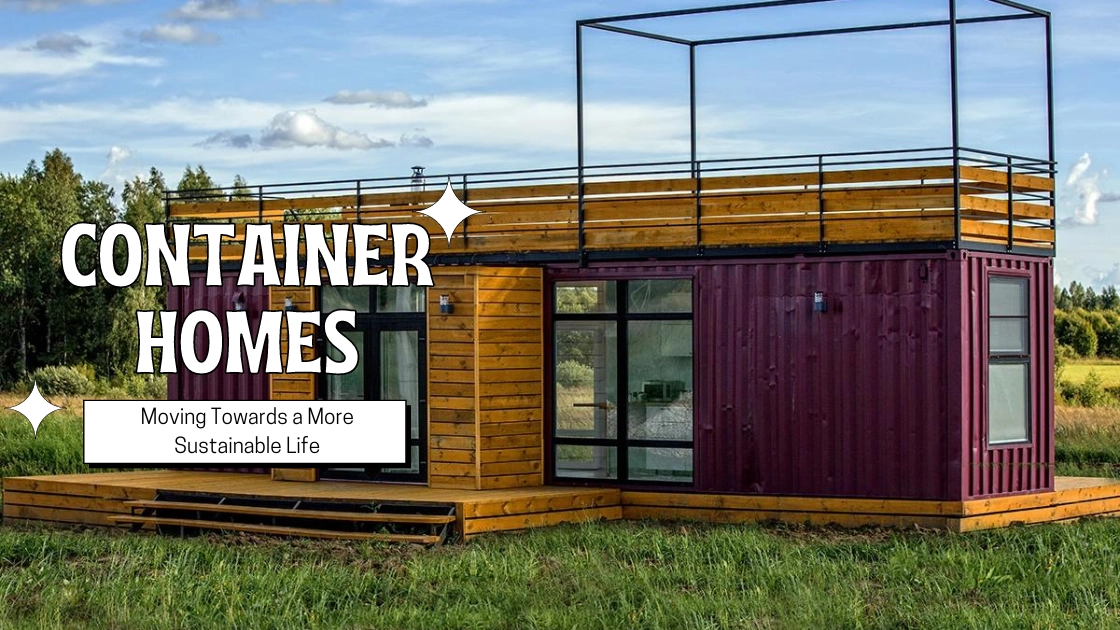How To Build Your Own Shipping Container Home
Introduction to Designing a Shipping Container House
The design process begins with an idea, a pencil, paper, and a few rough sketches of your concepts; this allows you to try various layout variations quickly and easily.
Dozens of ideas will come and go as the most viable design eventually begins to emerge. This sandbox phase is where new and different approaches can easily and quickly be tried & analyzed, validated, or rejected.
With the help of this guide, your understanding of the strengths and weaknesses of each design will be an educated one based on sound structural and aesthetic design principles as well as the construction code guidelines of the 2006 IRC.
This scientific analytical process will quickly allow you to narrow your options to the 1 or 2 designs that are most worthy of further development based on the following:
- Ease of engineering
- Ease of assembly
- Adherence to IRC code
It is urged that you read this guide in its entirety before going beyond this preliminary design stage and developing your designs more thoroughly, thereby avoiding the risk of doing wasted work.
Once you have read the Guide’s Engineering Section and you are comfortable that your design is viable from an engineering perspective, you can begin to develop your rough plans further into a series of scale drawings or 3D models. Each step of the drawing or modeling process will give you a more thorough understanding of the structure. As the elements are drawn or modeled together, problems will emerge, and solutions can be worked out.
The result of the design process will be a set of building plans. These drawings will be the visual representation of your structure as you envisioned it before it exists. When construction begins, the builder will rely upon these same plans to create your vision in real life. Pretty exciting.
Is an Architect Needed When Building a Container Home?
It wasn't until the early1930s that it became common to use building plans when constructing a residential home. In the “old days,” builders rarely drew detailed specifications as we find in modern house blueprints.
Design and construction back then were mostly a matter of proven methods passed down from father to son or by word of mouth. Most of the builders and crews didn’t use plans as we know them today at all. The plans were in their heads. But, as construction materials and methods grew more complex fewer and fewer people were willing to tackle home building on their own, and the architect’s role soon became to be perceived as indispensable.
Interestingly, this traditional dual-role designer-builder approach was considered unethical and banned by the AIA all the way up until 1979. In the AIA’s view, architecture was different from building and the standardized AIA contracts developed at that time put the architect in overall charge of the building process, making him a sort of “Grand Master of the Building Trades.”
The architect’s forte is the ideal design, generally understood to be a space tailored and ideally suited to an individual or family and their lifestyle. His training allows him to verify his designs to a large extent, be he will still rely on an engineer for more complex structural issues. An architect has a good working knowledge of the local building codes and can produce drawings of his designs, which he uses to sell his client on the project.
I’m often asked if an architect is necessary or helpful when designing a shipping container home. Some people assume they can eliminate the additional cost of an architect since the modular approach, on the surface, appears to be much simpler than the complex wood framing of traditional construction. Since a professional architect charges from 5% to 25% of the total construction costs as a fee for his work, it’s certainly a legitimate question.
An architect can be a great asset when designing any structure; the type of work an architect does is detailed and can be extremely labor-intensive. The level of precision necessary is beyond many people’s ability. Besides an architect’s ability to draw or create models, his knowledge of local codes as well as knowledge of the ins and outs of the local building department can be invaluable.
Keep in mind that architects are professional experts, and asking an expert to take on something he’s not an expert at (container homes) may not be very enticing to him. The safe way out could be for him to merely say, “In my professional opinion, the container home concept isn’t (insert any reason here)!” This way, he can avoid the learning curve, still maintain his professional stature and not take on any unnecessary risks or a potentially troublesome client who may want to pay a reduced fee. On the other hand, he may be happy to take the job (with or without an additional charge) since it’s such an unusual job.
A possible alternative may be to locate an architect, drafting, or design student willing to work on your project as a school or side project.
Try looking under professional services in your local Craig’s List. You could even place your ad looking for help. With the construction and building markets being what they are today, don’t be surprised if you find an army of people willing and able to assist you in various aspects of your design work. Don’t discount the talent; available and eager to work on anything different and exciting. Finding an architect, design, or home planning student to work with you to develop your full-size working drawings will probably save you weeks if not months of work.
By doing much of the preliminary design work, which will include acquiring the correct container measurements and providing a plan with preliminary dimensioned drawings and shipping container blueprints, along with detailed drawings, you will save money by giving your team what they need before they need it.
When it comes to the actual design drawings and plans, the most crucial question is what ate your abilities? Your talent, patience, and budget will play a large part in determining if an architect should play a role in your project.
CLICK HERE TO GAIN FULL ACCESS TO ALL OF THIS AMAZING GUIDE, INCLUDING:
III – Designing Based On The Shipping Container's Strengths
Understanding the shipping container's strengths and how to design a home that retains them.
IV – CAD & Shipping Container Home Design
Using CAD to design a shipping container house has both pros and cons.
V – Understanding Building Plans
Learn how converting your concept into concrete plans is a crucial step in catching problems and issues before construction begins.
VI – CAD Program Basics
Get familiar with the various CAD programs you could use to design a container house.
VII – Design Study – 800 Sq Ft Using 4 Shipping Containers
Examine the step-by-step process of turning a shipping container home sketch into a 3-dimensional design study.
VIII – Turning The Design Study Into Plans And Drawings
Check out the entire Guide, gather your facts, and compare it to other guides; heck – you can even print it out.
All I ask in return is a small donation to keep this site ad-free if you feel the information fulfilled your needs.
In other words, you get to decide what this valuable information is worth to you.
This Is The “Perfect” Most Complete… Easy-To-Use and Clear Shipping Container Home Guide You Will Find — Anywhere!
SALE ENDS SOON! – BUY NOW FOR ONLY $47
Feature Photo by Nick Karvounis on Unsplash
Save
Save







